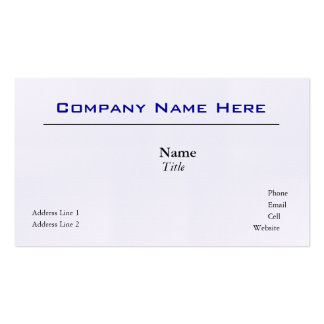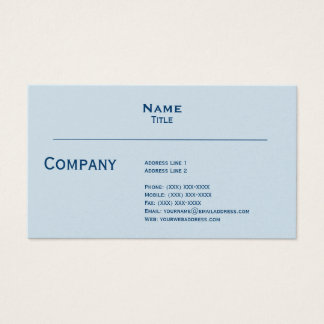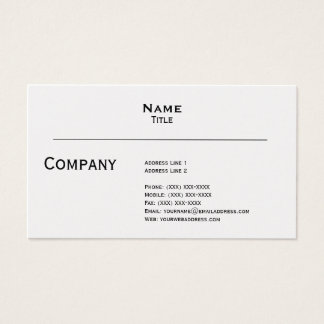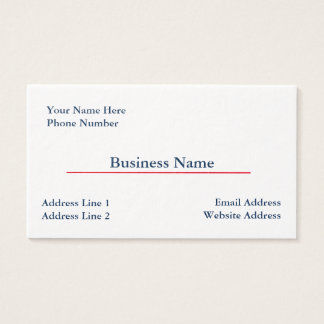It’s natural to feel a bit lost in the sea of online marketing strategies when you first take the plunge into the online world to market your business. If you’re focused on using a bunch of marketing jargon, investing in magazine advertisements, and putting up billboards, then you’re totally on the wrong track. What most businessmen don’t realize is that you’ll need to compel potential customers to view your business offerings on the World Wide Web.
Doing this is not tough if you know how to do it right. Simply having a website for namesake and a mere presence on social media won’t get you the growth you’re striving for. As a first step, you need to define your business and adopt a persona that you would be projecting online to Internet users. Below we’ve given you a complete lowdown on the best online marketing strategies to achieve your goals and successfully enter the booming cyber-marketplace.
Distinguish Yourself as a Brand
First and foremost, you’ll need to distinguish yourself from other competitors by thinking of a brand name, URL, tagline, trademark, and logo that suits your business. These should have the power to compel your online viewing audience to recall your company long after they’ve clicked away. A study at Penn State found that constant reinforcement of your brand can create a “brand recall” that boosts sales. While choosing your brand, ensure you keep your targeted audience in mind and gear it toward them. You should consider demographics like profession, location and age when making the final decision.
Learn from Your Competitors
If your competitors have already invaded the online world and gone viral, then you can learn a lot from studying their online marketing strategies. Look over their website’s product offerings, then brainstorm how you can offer more to your targeted audience. Find ways to differentiate yourself from these other competitors. In essence, think of starting off from where these other companies have ended their campaigns.
Zoom-In on Social Media
Most successful online marketing strategies today need to involve social media. Begin by exploring the different social media options available, such as Google+, Facebook, Twitter, Instagram, and Pinterest. If there’s industry-specific forums, you might also want to have your presence there. Also, don’t forget about LinkedIn because this professional social media website can help you draw in contracts for your business. Make certain you build eye-catching social media profiles and start participating in the right groups or forums.
Set a Marketing Budget
Social media ventures on platforms like Facebook and StumbleUpon likely won’t yield good results if you’re marketing yourself without spending a dime. Unless you share exceptionally good stuff in your niche industry, you won’t have a far enough online reach without investing in some paid advertisements. There are many options available like Google Ads where you will pay per click. You can also splurge for hiring content writers and Web designers, but ensure you’re sticking to a budget to avoid a low ROI.
Crank Out Great Content
In today’s digital world, you don’t just need content. You need great content. Your entry into cyber-space must begin with crafting website content that explains the services and products you’re offering. However, once you’re done with that, don’t stop there. Go a step further by working on a blog. Keep publishing great articles, eBooks, podcasts, and white papers to pique the interest of readers. Learn about inbound marketing to attract even more customers with your content creation too.
Stop the Stuffing
Stuffing goes really well with turkeys, but not articles. Too much keyword stuffing within the content on your website will land you in trouble with Google Panda. For good search engine rankings, readability is a must. Over-stuffing content with keywords leads to both poor readability and turning off your potential customers. Search engine algorithms that index websites today take great pains to exclude and penalize websites that stuff keywords in spam.
Take Advantage of SEO Plug-Ins
Staying up-to-date with the latest online marketing strategies and managing your content for search engine optimization becomes much easier when you have handy plug-ins. SEO plug-ins for WordPress are available to just about everything from adding headers properly to writing your website’s meta descriptions. Having plug-ins take care of these details will make your content more apparent to the search engine algorithms. Also, use social media meta tags to guarantee that your blog posts automatically are published on social media accounts.
Engage and Interact
Having survey questions, free goodies like eBooks or discounts, videos, and questionnaires will keep visitors on your website longer. With successful engagement, customers are more likely to remember your brand name and eventually make a purchase. When it comes to content, don’t concentrate merely on the length of the articles. Instead, keep your posts interesting, informative and interactive. Ask questions and encourage readers to comment or share their views.
According to Google’s Matt Cutts, a smaller website which is frequently updated to engage users can rank higher than bigger websites. Therefore, always keep adding new items that will keep your customers coming back for more. Whenever you give out free goodies or interact with your audience, it’s important to collect their contact information. You shouldn’t be too pushy for contact details because a “like” or “follow” on social media will do. Asking for subscribers to a newsletter is another great idea for getting e-mail information.
Inspire Confidence
If your business’s websites allows customers to pay for products online, then having the right security certifications is a must. Show your customers that their confidential credit card information will not be misused through the transaction. You can display the logos of the security certificates right next to your payment logos for PayPal, Visa, MasterCard, etc.
Make It Mobile-Friendly
Most people today will use their Smartphone, tablet, or other mobile device to make the most of their Internet browsing. That’s why your website needs to be compatible with all mobile devices to avoid missing out on a huge potential customer base. Also, a website’s mobile friendliness is now used as a ranking factor for Google. Choose a mobile-friendly design that allows the best possible viewing experience even on-the-go.
Increase Your Reach on Social Media
Social media is supposed to be fun, so bring an element of fun to your online marketing strategies. Humor, information, and an element of awe are vital for effectively building a base of followers who turn into customers on social media. Create online banners that are both fun and engaging while also sporting the logo for your business. If your banner goes viral, guess whose bottom line will benefit? Make use of options like hashtags to get your message out.
Always Respond to Customers
Interaction is what social media is all about. If a person queries about your product or a customer wishes to file a complaint, you must respond immediately. Rather than focus on the negative and view them as a headache, look at the complaints as a medium for connecting with your customers. A person who quickly and efficiently gets their problem solved with an apology from your business is more likely to be satisfied than a person with no complaints.
Keep Using E-mail Marketing
E-mail marketing will never become outdated because it by far gives the best results. That being said, it’s best to refrain from sending out junk e-mails that probably will only end up in the spam box. Send out “personalized mass e-mails” to your subscribers and social media followers. Tools like Mail Chimp make it extremely simple to use the name of your customers and add a small personal-sounding note with every email. These e-mails could invite the audience to a whole range of online activities you’re planning to boost engagement.
Consider Ad Retargeting
Approximately two percent of Internet traffic is converted in the first visit. This statistic tells us that people take time in making decisions about their online purchases. With an effective ad-retargeting tool, you can specifically bring your products before such people who have previously shown interest in your products. Ad retargeting is one of the effective online marketing strategies used to focus on interested customers and see a higher ROI. Likewise, Watchfinder clocks 1,300 percent ROI using precision retargeting With Google Analytics
Don’t Ignore Directories and Reviews
Listing your business in online directories and review sites can expand your presence and draw in more potential customers, especially the ones scouring the search engines. This will also give more insight into your business when done properly. For instance, if you are in the food industry, you might want to consider Yelp. If you have a hotel or resort, you must have a presence on TripAdvisor. Online Yellow Pages directories are often visited by people looking up phone numbers, so include your business here too. Targeting a smaller audience through local directories can also be effective.
Maintain Your Reputation
The World Wide Web can be quite abusive, especially when there’s a distraught customer. Your social media profile or directory listing may become filled with bad reviews and nasty comments. Then, there’s also the possibility that your competitors may try to sabotage your good name with fake negative reviews. This is why you should look into hiring a specialist who can effectively keep track of these happenings and work to maintain a positive online reputation.
Gauge Your ROI
At the end of the day, you’ll need to know which online campaigns are bringing you revenue and which are simply eating a hole in your wallet. Having a great ROI (return on investment) calculator can give you the right perspective. For instance, you can calculate ROI through Google Analytics or use a formula to find out your social media ROI. Then, readjust your online marketing strategies to ensure cost-effectiveness.
Overall, it’s essential that you remain in-tune with the constantly changing SEO norms and stay abreast of the newest trends in social media. The Internet is always evolving, so you need to keep pace with it to keep your business relevant. Use these great online marketing strategies to zero in on your target audience and adopt an online voice that connects them.
15% Off All Business Cards




















